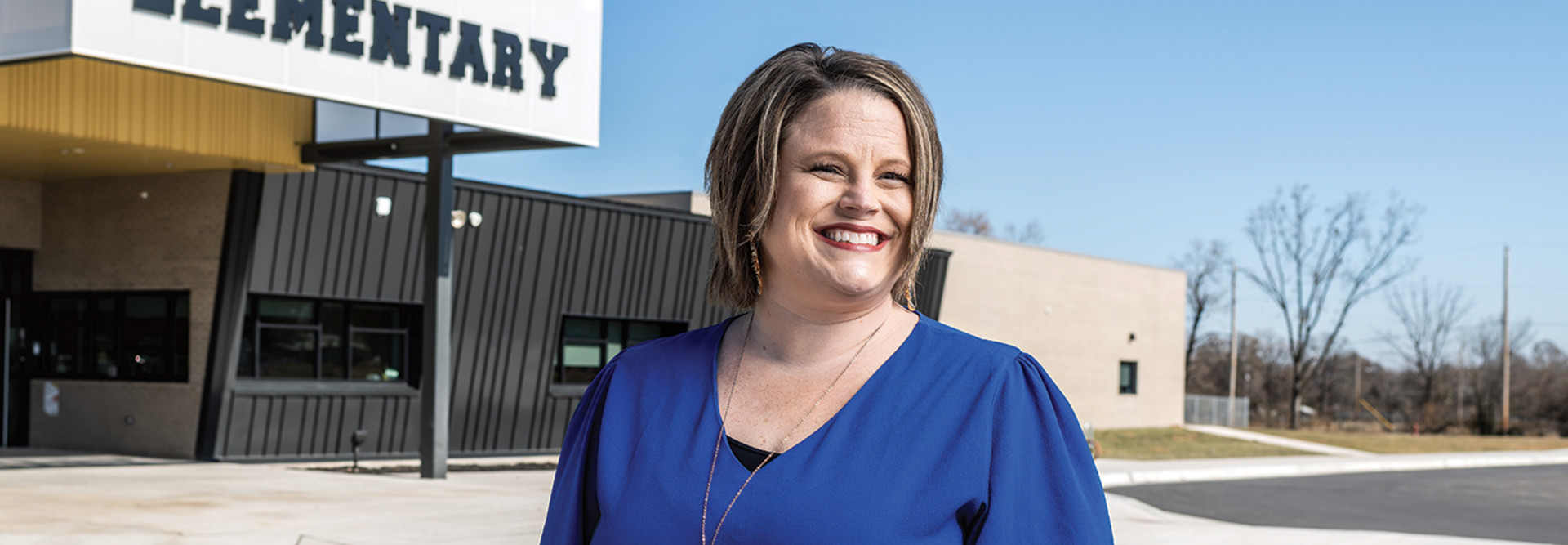Technology Made Adaptation Quick
The tornado that destroyed Goodman Elementary touched down at night, after everyone but Custodian Lyndell “Lucky” Ulmer was gone. Ulmer, whose nickname predates the storm, escaped unscathed.
After the storm, Neosho School District moved Goodman’s four grade levels to temporary sites, including a wrestling gym in the central office. Fourth graders relocated to an unused classroom in another district elementary school.
The tornado destroyed more than half of Goodman’s computers and tablets, so Technology Director Scott Harris immediately launched a one-to-one program, purchasing Chromebooks for each third and fourth grader as well as tablets for younger students. District IT staffers installed spare HPE Aruba wireless access points at the temporary locations.
“We just wanted to do what was best for students, and the teachers were quick to adapt,” Harris says.
Meanwhile, faculty experimented with different teaching styles, including team teaching to different grade levels. They also tested different furniture and interactive flat-panel displays to determine what would work best in their new building, says Hamilton, Goodman’s principal.
“Teachers got creative, and it allowed them to see there are other ways to teach,” she says.
District leaders and school faculty saw firsthand the benefits of educating students in spaces with open layouts, such as improved student engagement.
“It was a rough time, but it gave us a chance to try things and figure out who we wanted to be,” Hamilton says.
MORE FROM EDTECH: Read how districts install new tech in old schools.
A New Approach to Teaching
That fall, Neosho seventh graders moved to a new junior high, opening up space in the old middle school building for Goodman’s 350 students to reunite under one roof while their new school was under construction.
Hamilton spearheaded the design of the new building, which is bright and airy with flexible learning spaces that include three collaboration areas with soft benches, ottomans and an outdoor courtyard. Ten of the school’s 15 classrooms have a retractable whiteboard wall in the middle, which teachers can open to convert a smaller room into a larger classroom if they want to combine classes for projects, Hamilton says.
Each classroom features flexible furniture, including wobbly stools at different heights. Each room also has a 75-inch SMART 6000 Series interactive flat-panel display and a PowerGistics tower, a small-footprint shelving system that stores and charges Chromebooks and tablets.
Students use G Suite for Education and other educational applications, including a new math program, that allow teachers to individualize instruction to students with specific assignments or educational videos.
“Teachers rarely lecture,” Hamilton says. “They may give a 15-minute lesson on a targeted skill, then do small-group instruction. We have kids independently working on assignments, but there’s also a lot of creation going on and collaborative projects.”
IT staffers hung 32-inch Samsung displays outside each classroom door to use as digital bulletin boards displaying student work or school announcements. Students can also connect their devices to the displays and work on projects, Hamilton says.
Harris installed Juniper Network switches and 150 Aruba APs to ensure fast connectivity for students and staff. Overall, teachers finally have a formal space to facilitate their new teaching strategies, he says.
“Teachers are converting much of their curriculum to project-based learning, and they are getting help from the design of the building and the technology we put in these learning spaces,” Harris says.
MORE FROM EDTECH: What school districts need to know about disaster recovery as a service.
Tech-Driven Recovery Allowed Teachers to Get Paid
Hurricane Michael pounded Florida in October 2018, causing $350 million in damage at Bay District Schools in Panama City, Fla. Most of the district’s 40-plus schools suffered damage. The immediate aftermath included power outages, and fiber-optic internet access was cut throughout the community, recalls Chip Shows, Bay District’s director of management information systems.
The outages spurred an immediate challenge: running payroll.
The first-floor data center ran on generator power. To get wireless access, IT staffers used a Verizon mobile hotspot, running cable from the data center and up to the fourth floor, where an employee with a notebook computer processed payroll, Shows says.
A month later, Bay District Schools resumed classes, with some schools using portable classrooms and others sharing a campus by implementing a split schedule. At that time, about 90 percent of the district's schools had regained internet connectivity. Verizon donated Cradlepoint routers — which use a cellular connection — to the schools that still lacked access.The district’s 39-person IT staff salvaged computers, interactive whiteboards, wireless APs and switches from the damaged schools. The IT department also purchased 1,000 Chromebooks and 250 hotspots for students and staff to check out, Shows says.












